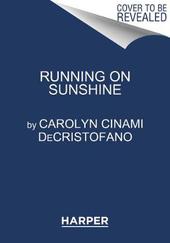
|
Running on Sunshine: How Does Solar Energy Work? (Let's-Read-and-Find-Out Science 2)
Paperback / softback
Main Details
| Title |
Running on Sunshine: How Does Solar Energy Work? (Let's-Read-and-Find-Out Science 2)
|
| Authors and Contributors |
By (author) Carolyn DeCristofano
|
| Series | Let's-Read-and-Find-Out Science 2 |
|---|
| Physical Properties |
| Format:Paperback / softback | | Pages:40 | | Dimensions(mm): Height 203,Width 254 |
|
| ISBN/Barcode |
9780062473103
|
| Classifications | Dewey:621.47 |
|---|
| Audience | |
|---|
|
Publishing Details |
| Publisher |
HarperCollins Publishers Inc
|
| Imprint |
HarperCollins
|
| Publication Date |
14 June 2018 |
| Publication Country |
United States
|
Description
Read and find out about solar energy in this colorfully illustrated nonfiction picture book. The sun is a source of energy for living things. Energy that comes from sunshine is called solar energy. But how does solar energy work And how can we use solar energy to not only stay on the cutting-edge of technology, but to help keep the environment healthy Read and find out about solar roads that light up when there's danger ahead, like a moose on the road-and did you know that someday tiny solar chips placed in someone's eyes could help a blind person see Learn all this and more! Running on Sunshine comes packed with visual aids like charts, sidebars, an infographic, and a hands-on activity-how to direct sunlight using mirrors! Both the text and the artwork were vetted for accuracy by Dr. Bart Bartlett, Associate Professor of Chemistry at the University of Michigan. This is a clear and appealing science book for early elementary age kids, both at home and in the classroom. It's a Level 2 Let's-Read-and-Find-Out, which means the book explores more challenging concepts for children in the primary grades. The 100+ titles in this leading nonfiction series are: hands-on and visual acclaimed and trusted great for classrooms Top 10 reasons to love LRFOs: Entertain and educate at the same time Have appealing, child-centered topics Developmentally appropriate for emerging readers Focused; answering questions instead of using survey approach Employ engaging picture book quality illustrations Use simple charts and graphics to improve visual literacy skills Feature hands-on activities to engage young scientists Meet national science education standards Written/illustrated by award-winning authors/illustrators & vetted by an expert in the field Over 130 titles in print, meeting a wide range of kids' scientific interests Books in this series support the Common Core Learning Standards, Next Generation Science Standards, and the Science, Technology, Engineering, and Math (STEM) standards. Let's-Read-and-Find-Out is the winner of the American Association for the Advancement of Science/Subaru Science Books & Films Prize for Outstanding Science Series.
Author Biography
Carolyn Cinami DeCristofano is a science education consultant and the author of several science books for children, including Running on Sunshine and A Black Hole Is Not a Hole, an NCTE Orbis Pictus Recommended Book of Outstanding Nonfiction, and Big Bang!, an IRA Notable Children's Book. Visit her online at www.carolyndecristofano.com. Giovana Medeiros is a freelance illustrator from Brazil who now lives in Dublin. When not making art, Giovana can be found trying new foods, drinking coffee, and walking around the city in search of her next inspiration. Running on Sunshine is her debut picture book. You can visit her online at www.giovanamedeiros.com.
Reviews"A necessary, engaging book that shines a light on solar energy." - Kirkus Reviews (starred review) "A timely, informative addition to the Let's-Read-and-Find-Out Science series." - Booklist "In concise, straightforward prose, DeCristofano introduces young readers to solar power: where it comes from and how it is harnessed, converted into energy, and used. In an even-handed discussion, she covers the environmental advantages of solar power over more traditional methods of producing electricity as well as some drawbacks (and possible solutions) to the use of solar power. Well-placed questions such as 'What happens when it rains? Or when clouds block the Sun?' ask readers and listeners to become actively involved in the narrative." - The Horn Book
|